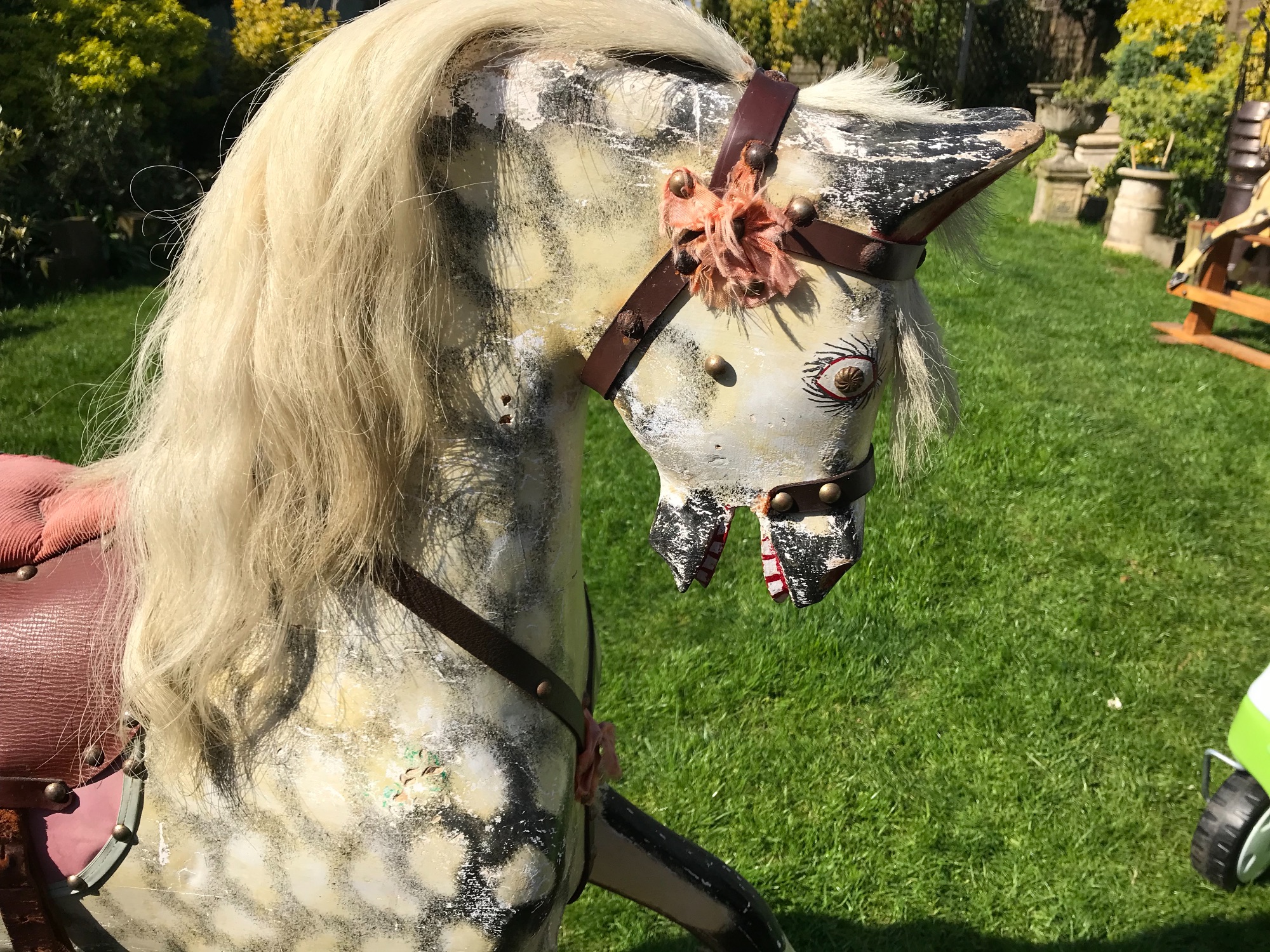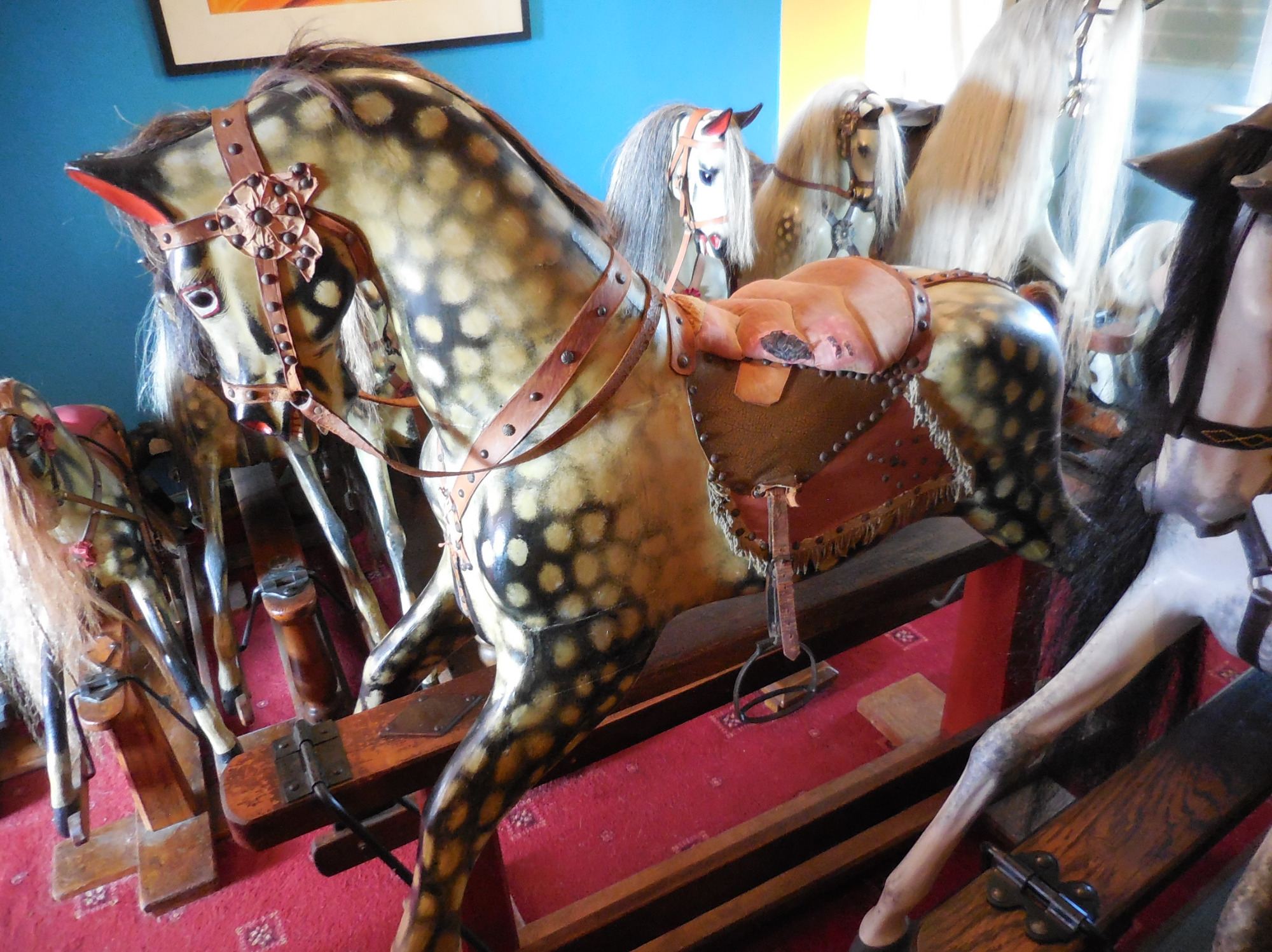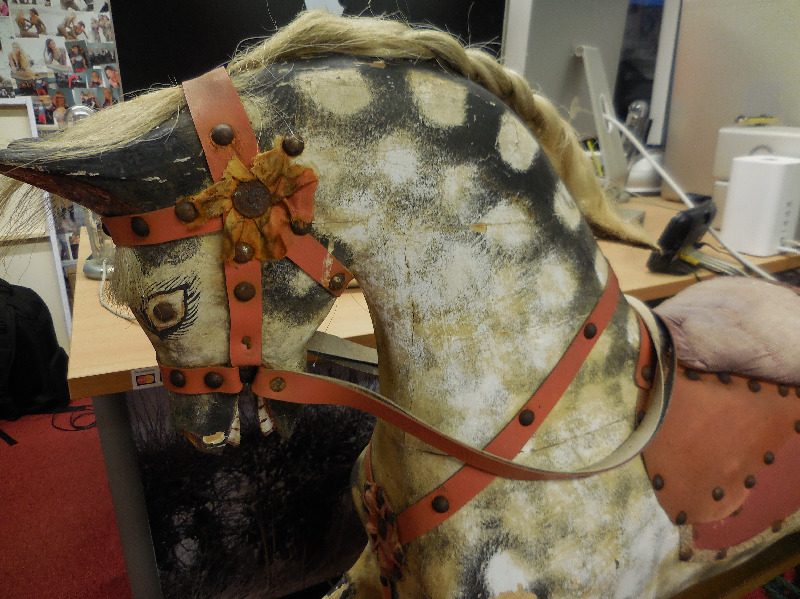J Collinson & Sons Rocking Horses
J. Collinson and Sons: The firm of J (Jervis) Collinson has always been a small family concern with only a few workers, mostly family members and has remained int he city of Liverpool. The name Jervis is part of the family tradition handed down from father to son, hence the continuance of the name of the firm, J. Collinson. From 1836 to 1850 their horses were painted in different colours however in 1851 Queen Victoria visited the Collinson's workshop and rose a dapple grey horse. Since then, in honour of the royal visit they have only made dapple grey horses.
Sometime during the 1890s Jervis Drinkall Collinson Senior started work in the factory where he carried on business until his death in 1945. Circa 1912 Jervis Drinkall Junior was born and by the late 1920s he was working alongside his father in the factory at Richmond Terrace, Liverpool. Both men produced the glass-eyed, hand-dappled horses with attention to carved detail along the lines of the 'extra carved' finish of other manufacturers of quality rocking horses. Glass eyes were replaced by wooden balls after the Second World War. Despite the general acceptance of riding astride for women by the 1920s, larger Collinson horses continued to be made with side saddle equipage until as late as the early 1950s.
The present propriertor of the firm, Jervis James, was born in 1935, the year the factory workshop was relocated at Great Georges Road the period from the mid 1930s to the mid 1940s was perhaps the most difficult foer the firm. For the most part Jervis James father was occupied in the British Aircrat Services leaving grandfather Jervis to manage on his own until production ceased entirely for a few years duirng the second world war. Production began again in the late 1940s under Jervis James' father and Jervis joined him in the factory in 1950 at the age of 15. His younger brother Leonard joined the firm in the late 1950s.
Earlier this century Collinson's suppied the London stores, Harrods and Hamleys and sometime later an agent, Johnson, handled distribution of the horses from Nottingham. They became misleadingly known as 'Johnson rocking horses'. The factory workshop was until 1993 located at Smithdown Road where thousands of Collinson rocking horses were produced since 1965. The horses were never marked until about 1981 when the maker's name on a gold plate was first applied to the front of the stand base. The factory finally closed their doors int he latter part of 1993 due to lack of demand for these toys.
Collinson rocking horses are very distinctive with their dapples and come in varying heights from a tiny one to a large 55inch tall horse. They have a lovely swinging motion and are a good starting place for a collector as they are not as expensive as Lines and Ayres horses.
They are very appealing to children although some do look rather ugly, most children prefer these to their more expensive counterparts. They are identiable by their diamond plate on the stand and have a plain pillar and their saddles were made of red corduroy fabric.
The horse below is in his original condition and as can be seen his saddle has faded but his distinctive markings are visible.





